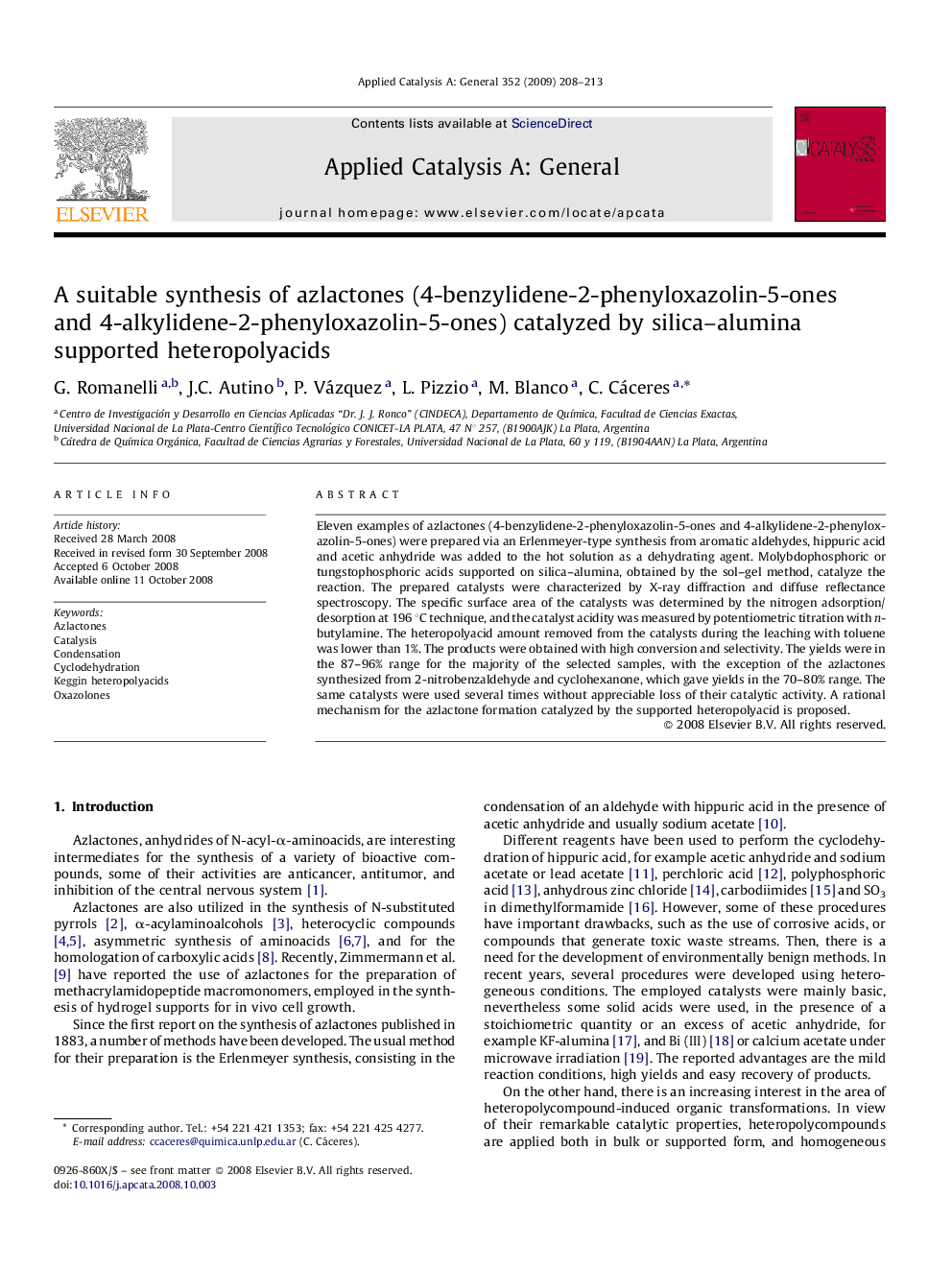| کد مقاله | کد نشریه | سال انتشار | مقاله انگلیسی | نسخه تمام متن |
|---|---|---|---|---|
| 43171 | 45957 | 2009 | 6 صفحه PDF | دانلود رایگان |

Eleven examples of azlactones (4-benzylidene-2-phenyloxazolin-5-ones and 4-alkylidene-2-phenyloxazolin-5-ones) were prepared via an Erlenmeyer-type synthesis from aromatic aldehydes, hippuric acid and acetic anhydride was added to the hot solution as a dehydrating agent. Molybdophosphoric or tungstophosphoric acids supported on silica–alumina, obtained by the sol–gel method, catalyze the reaction. The prepared catalysts were characterized by X-ray diffraction and diffuse reflectance spectroscopy. The specific surface area of the catalysts was determined by the nitrogen adsorption/desorption at 196 °C technique, and the catalyst acidity was measured by potentiometric titration with n-butylamine. The heteropolyacid amount removed from the catalysts during the leaching with toluene was lower than 1%. The products were obtained with high conversion and selectivity. The yields were in the 87–96% range for the majority of the selected samples, with the exception of the azlactones synthesized from 2-nitrobenzaldehyde and cyclohexanone, which gave yields in the 70–80% range. The same catalysts were used several times without appreciable loss of their catalytic activity. A rational mechanism for the azlactone formation catalyzed by the supported heteropolyacid is proposed.
Azlactones (4-benzylidene-2-phenyloxazolin-5-ones and 4-alkylidene-2-phenyloxazolin-5-ones) were prepared via an Erlenmeyer-type synthesis from aromatic aldehydes, hippuric acid and acetic anhydride. The reaction was catalyzed by molybdophosphoric or tungstophosphoric acids supported on silica–alumina. The yields were in the 87–96% range for majority of the selected samples, with the exception of the azlactones synthesized from 2-nitrobenzaldehyde and cyclohexanone, which gave yields in the 70–80% range. Figure optionsDownload as PowerPoint slide
Journal: Applied Catalysis A: General - Volume 352, Issues 1–2, 15 January 2009, Pages 208–213